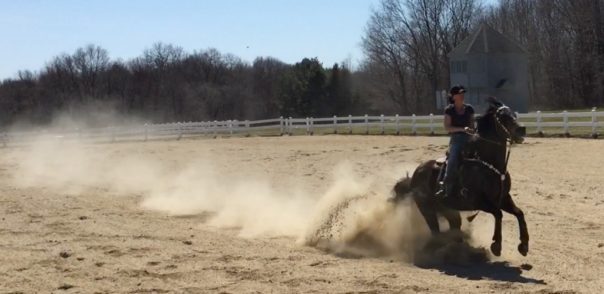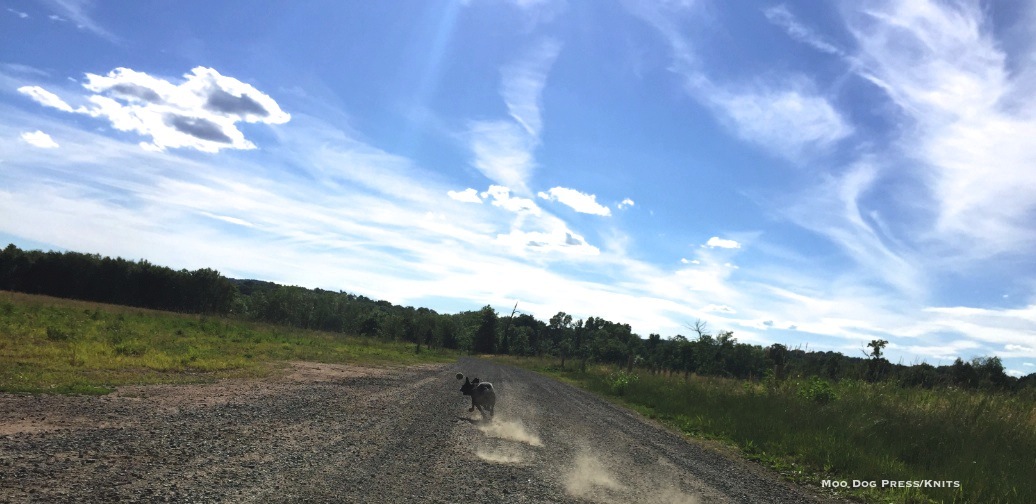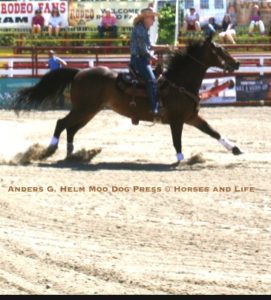Ride, Not For The Crowd: On Focus And Imagination
“Anything one man can imagine, other men can make real.”
― Jules Verne, Around the World in Eighty Days
There's a Tesla car “driving” away from our marvelous planet, cruising into space. On the dash Don't Panic – a nod to futurist, author – and wildly imaginative human – the late Douglas Adams. Inspiration.

Long go and somewhat far away, a man on horseback inadvertently gave me good life advice. He was riding out to the nearby AFB range (an area literally the size of Rhode Island and all interconnected with sandy trails, coldwater creeks, plenty of wildlife, Heron rookeries, deer, cottonmouth snakes). He slowed his racking horse – a surefooted comfortable ride with an easy disposition and sturdy endurance. This equine looked rough and was not shod, but was the original off-road vehicle of choice in rural Florida.
Inside the fence as he rode by, I was struggling with a green-broke gelding who had been cooped up, fed lots of grain, was known in a small community as an unbreakable, crazy equine. No one could handle him, And so he stayed in his stall, a self-contained loop of too much energy and little to no handling. A horse that would run straight into a shed at a full gallop he was so “hot” from all that grain and pent-up energy. He scared people. But actually – he scared himself. Think of how a person would behave after consuming two pots of strong coffee plus some espresso – then be put in a room all day, all night, alone.

The advice given as this man reined up and came over to the fence on his calm, well-traveled horse? “That horse is crazy, you're wasting your time.”
But guess what?
With a strong routine, lots of pasture time along with two other calm horses, zero grain, daily hands-on work – well, that “crazy” horse revealed his true nature. Many hours of groundwork, handling, repeat and reward, then time in the saddle and many, many miles of trail time transformed him into a good-as-gold horse. He would willingly go anywhere, do anything. Practice with getting on and off the trailer made this a no big deal to him. Strange places became second nature – the trust he learned by days passing and plenty of handling, good experiences? Rock solid.
His natural gait included a comfortable single-foot shuffle that provided a smooth-as-silk rocking chair ride – and much later learned he was part Tennessee Walker. No shoes – he had flinty tough feet, which was another plus. And turned out to be an easy keeper. Not “crazy” after all, just too much grain with no direction – and no one to help him be a horse. (Yes, grain was added back to his diet very slowly.) What a joy to see him grow.
In time he achieved balance in every way and was sold as a pair (along with his pasture-mate, another gelding), to a couple who loved to trail ride for miles and wanted calm, go-anywhere horses.
Lesson learned? Ride the horse, don't listen to the crowd – even if it is one voice saying something is impossible. Focus, follow your bliss, aim high.
Canines are smaller in size perhaps, but the same basic tenets apply to them as well. Over the course of 18 months a high-strung, jittery and submissive Boston terrier has grown into to an utterly responsive, (mostly) well-behaved canine. Her high intelligence almost was a handicap as she learned instantaneously to fetch a ball at parties and what provoked a positive response. Entertainment. Not good for her balance in life though. That's in the past now. Some quirks remain – but she “speaks” loudly and I listen.
Because “impossible” is sometimes looking at crazy in another way to achieve something worth doing.
Back to Douglas Adams.
“Maybe we should be looking after it just a little bit better. Not for the world’s sake—we talk rather grandly about “saving the world.” We don’t have to save the world–the world’s fine! The world has been through five periods of mass extinction. Sixty-five million years ago when, as it seems, a comet hit the Earth at the same time that there were vast volcanic eruptions in India, which saw off the dinosaurs, and something like 90% of the life on the planet at the time. Go back another, I think is 150 million years earlier than that, to the Permian-Triassic boundary, another giant, giant, giant extinction. The world has been through it many many times before. And what tends to happen, what happens invariably after each mass extinction, is that there’s a huge amount of space available, for new forms of life suddenly to emerge and flourish into. Just as the extinction of the dinosaurs made way for us. Without that extinction, we would not be here.
“So, the world is fine. We don’t have to save the world—the world is big enough to look after itself. What we have to be concerned about, is whether or not the world we live in, will be capable of sustaining us in it. That’s what we need to think about. Thank you very much ladies and gentlemen. (Applause.)”
– from his TEDTalk 2001, linked here (and a transcript for reading is just below the video).
“Here's to the crazy ones. The misfits. The rebels. The troublemakers. The round pegs in the square holes. The ones who see things differently. They're not fond of rules. And they have no respect for the status quo. You can quote them, disagree with them, glorify or vilify them. About the only thing you can't do is ignore them. Because they change things. They push the human race forward. And while some may see them as the crazy ones, we see genius. Because the people who are crazy enough to think they can change the world, are the ones who do.” ― Rob Siltanen (not Steve Jobs)


